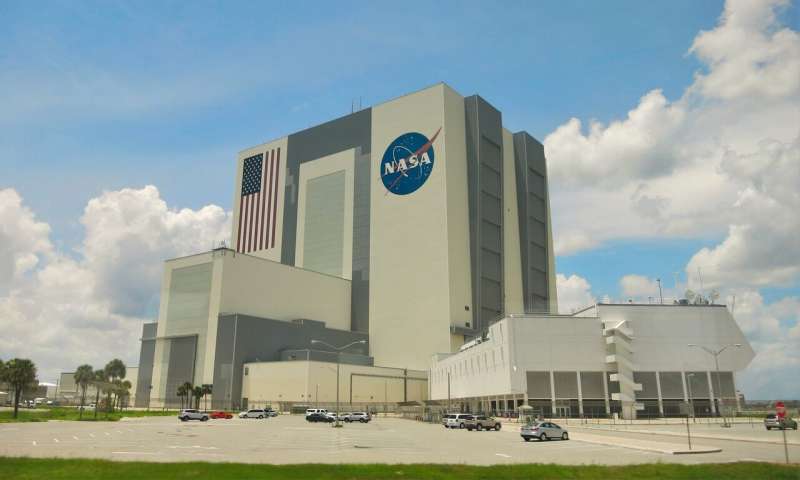
A first stage of Blue Origin’s massive New Glenn rocket became king of the road for a day making a trip from the factory to its launch complex on Wednesday.
Transported by a series of multi-wheeled carriages and an arching structure, the 189-foot-tall first stage for what will be a 320-foot-tall rocket when fully assembled traveled horizontally on a 22-mile trip from the New Glenn factory in Merritt Island through Kennedy Space Center over to Cape Canaveral Space Force Station where Blue Origin has a hangar and launch pad at Launch Complex 36.
The slow-rolling caravan took up all lanes as it paused for several minutes before passing by the Vehicle Assembly Building at KSC, drawing a crowd of curious onlookers.
Jeff Bezos late last year stated that he was optimistic New Glenn could still make its first-ever launch by the end of 2024.
The rocket uses seven of Blue Origin’s new BE-4 engines, which just made their first trip to space successfully launching United Launch Alliance’s new Vulcan Centaur on its debut early Monday morning. Vulcan uses just a pair of BE-4s, and has up the five more Vulcan launches slated in 2024 as well.
“Blue Origin delivered the engines for this flight vehicle early last year, the real focus of test activity was getting through qualifications, to qualify BE-4 for flight,” said ULA’s Mark Peller, vice president of Vulcan development ahead of launch last week. “They’ve switched back now to production engines to support our production activities.”
The two engines needed for Vulcan’s next flight are already complete, he said.
“They’re assembled and they’re actually down at their West Texas facility going through final acceptance,” Peller said. “So they’re on track.”
With what are now flight-tested engines, Blue Origin can begin ramping up production, and New Glenn’s first flight could stay on Blue Origin’s 2024 schedule.
Blue Origin officials had no comment about why the first stage was moved Wednesday.
The heavy lift rocket, which features a larger diameter fairing for more payload capacity than its competitors, is designed for reuse similar to SpaceX’s Falcon 9 rockets, but with more power.
The seven BE-4’s can generate early 3.9 million pounds of thrust at liftoff, and the first stages are designed for 25 flights. A Falcon 9 generates 1.7 million pounds of thrust while the new Vulcan Centaur using its maximum six solid rocket boosters can achieve 3.3 million pounds of thrust. A Falcon Heavy, essentially three Falcon 9’s put together, can generate 5.1 million pounds of thrust.
Similar to SpaceX, the boosters will aim for a landing 620 miles downrange in the Atlantic on a landing platform and then return to the launch site to Port Canaveral, where Blue Origin recently installed its a 375-foot-tall tower crane.
The eventual trip from the port back to LC-36, though, will be shorter than the factory ride with the launch site only about 5 miles north of Port Canaveral.
Blue Origin took over the lease for LC-36 in 2015, investing about $1 billion in the pad site alone. It was previously used for government launches from 1962 to 2005, including lunar lander Surveyor 1 in 1967 and some of the Mariner probes.
2024 Orlando Sentinel. Distributed by Tribune Content Agency, LLC.
Citation:
Mammoth rocket stage for Blue Origin New Glenn goes for sideways ride on Space Coast (2024, January 11)
retrieved 11 January 2024
from https://phys.org/news/2024-01-mammoth-rocket-stage-blue-glenn.html
This document is subject to copyright. Apart from any fair dealing for the purpose of private study or research, no
part may be reproduced without the written permission. The content is provided for information purposes only.

